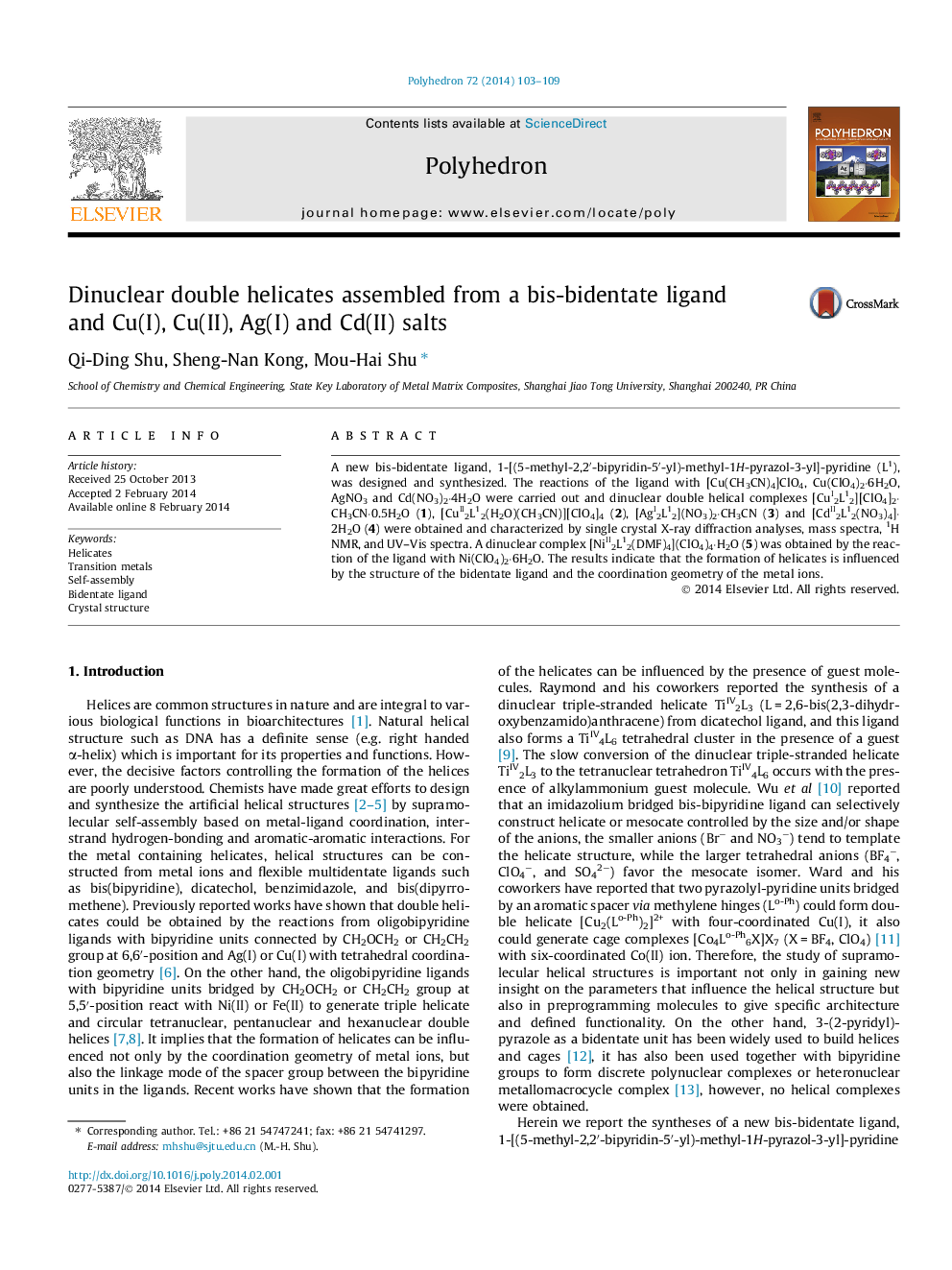| کد مقاله | کد نشریه | سال انتشار | مقاله انگلیسی | نسخه تمام متن |
|---|---|---|---|---|
| 1335408 | 1500267 | 2014 | 7 صفحه PDF | دانلود رایگان |

A new bis-bidentate ligand, 1-[(5-methyl-2,2′-bipyridin-5′-yl)-methyl-1H-pyrazol-3-yl]-pyridine (L1), was designed and synthesized. The reactions of the ligand with [Cu(CH3CN)4]ClO4, Cu(ClO4)2·6H2O, AgNO3 and Cd(NO3)2·4H2O were carried out and dinuclear double helical complexes [CuI2L12][ClO4]2·CH3CN·0.5H2O (1), [CuII2L12(H2O)(CH3CN)][ClO4]4 (2), [AgI2L12](NO3)2·CH3CN (3) and [CdII2L12(NO3)4]·2H2O (4) were obtained and characterized by single crystal X-ray diffraction analyses, mass spectra, 1H NMR, and UV–Vis spectra. A dinuclear complex [NiII2L12(DMF)4](ClO4)4·H2O (5) was obtained by the reaction of the ligand with Ni(ClO4)2·6H2O. The results indicate that the formation of helicates is influenced by the structure of the bidentate ligand and the coordination geometry of the metal ions.
Four dinuclear double helicates were assembled from a new bis-bidentate ligand and Cu(I), Cu(II), Ag(I), and Cd(II) salts. The results confirmed that the formation of the helical complexes is influenced by the structures of the ligand and the coordination goemetry of the metal ions.Figure optionsDownload as PowerPoint slide
Journal: Polyhedron - Volume 72, 18 April 2014, Pages 103–109